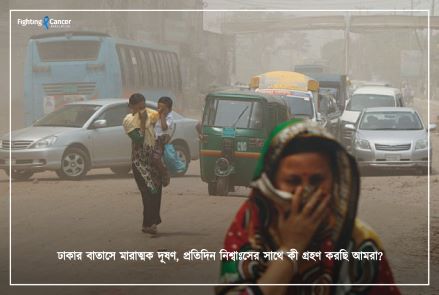
Bangladesh's largest city, Dhaka, is the 9th largest city in the world and ranks 6th in population. It suffers from high pollution levels year-round due to being the country's economic hub. Dhaka ranked the third position on the global list of cities with the most severe air pollution, registering an AQI index of 181. The AQI informs people about the daily air quality in a city and its associated health effects. Scores range from 0 to 50 (good), 51 to 100 (moderate), 101 to 150 (unhealthy for sensitive groups), 151 to 200 (unhealthy), 201 to 300 (very unhealthy), and 301 and higher (hazardous). Dhaka faces pollution problems from all sides. The highly populated city is subject to the air contaminating effects of the massive use of vehicles and industrial activities, leading to elevated pollution levels. A recent study shows that toxic air in Dhaka, Bangladesh, is a major factor contributing to lung cancer. Carcinogenic elements come from industries, brick kilns, and vehicles, leading to high blood lead levels in children. The city's pollution is mainly from vehicles, industries, and construction sites, releasing dangerous pollutants like black carbon and volatile organic compounds. Chemical compounds such as nitrogen dioxide and sulfur dioxide are also abundant, along with smoke and haze from brick kilns. Dust from construction sites contains harmful particles like silica dust, posing long-term health risks when inhaled. The pollution levels in Dhaka starts to rise significantly in October, peaking in January at 181.8 μg/m³. After January, the levels steadily dropped, with the cleanest reading of 31.3 μg/m³ recorded in August.
Image Source: https://www.thedailystar.net/

